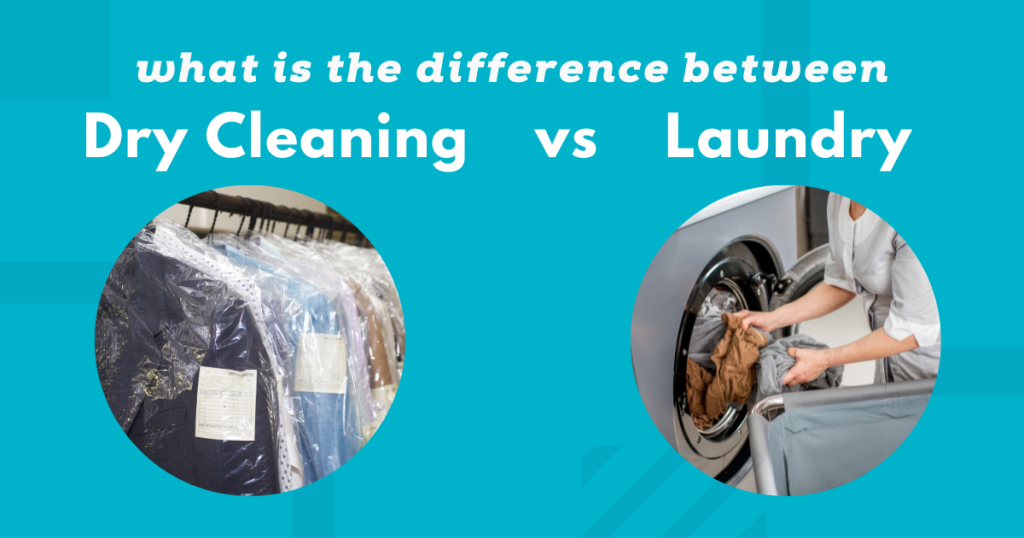Came here to know what’s the difference between dry cleaning and laundry? Then, you are at the right page.
When discussing the cleaning of clothing, the terms “Dry Cleaning” and “Laundry” are sometimes used interchangeably, yet the two processes differ significantly.
Both methods are used to clean clothes, but they require distinct cleaning procedures, different solvents and detergents, and are best suited for certain type of clothing.
Which method of dry or wet cleaning is preferable for your clothing? In this article, let’s know about it below.
Also Read- Difference between Mop and Broom
Dry Cleaning: Overview

Source: mcfenvironmental.com
A liquid solvent is used to clean your garments of water and soap during dry cleaning, which is very similar to conventional home laundry.
The term “Dry Cleaning” refers to a solvent with little or no water in it. Instead, it uses a chemical solvent to get rid of stains and grime on clothes, usually perchloroethylene.
- Silk, Wool, Cashmere are just a few examples of delicate materials and clothing that are frequently cleaned using the dry cleaning method instead of water.
- Dry Cleaning is the best procedure for these kinds of items because washing these textiles in water could cause them to shrink or lose.
- Dry Cleaning is also utilized for garments that are really dirty or have stains that are difficult to remove with regular washing.
Related Post: Upright and Portable Carpet Cleaning Solution: Know the Differences?
Benefits of Dry Cleaning

Source: presscleaners.com
- One advantage of Dry Cleaning is that it is a gentle cleaning method that might help your garments last longer.
- Dry Cleaning uses a chemical solution that is kind to fragile materials and successfully removes stains without harming the fabric.
- Furthermore, Dry Cleaning is less abrasive than conventional washing techniques, which can help maintain the color and texture of your clothing.
If you want to know other cleaning related topics, then you can read our other posts which you can find here:
Laundry: Overview

Source: media.cnn.com
Contrarily, the Laundry procedure entails washing the clothing in water and detergent to clean it.
Sorting clothes by color and fabric type, pre-treating stains, washing the clothes in a machine, drying the garments, and ironing them are a few of the typical processes in the laundry process.
- Since people have been doing Laundry since they started wearing clothes, several academic fields are interested in the ways that other cultures have approached this common human necessity.
- Clothes that can be washed in water, such cotton, linen and polyester, are often cleaned using laundry, which is a popular approach.
- Contrary to Dry Cleaning, laundry is not appropriate for delicate materials, badly filthy, or stained clothing.
- Delicate Fabrics may shrink or lose their shape when washed in water, and excessively filthy clothing may not be thoroughly cleaned by utilizing conventional laundry techniques.
Benefits Of Laundry

Source: cf.ltkcdn.net
- One advantage of laundry is that it is an easy and affordable way to clean garments.
- It is simple to wash clothes in water and detergent at home with a washing machine making it a practical choice for clothing that is used frequently.
Exploring the Difference Between Dry Cleaning and Laundry

Source: tidydiary.com
| Dry Cleaning | Laundry |
| In Dry Cleaning, the clothes are washed by using chemicals and solvents. | In Laundry, the clothes are washed using water and detergent. |
| This process doesn’t include usage of water in cleaning clothes. | This process includes usage of water in cleaning clothes. |
| Typically more expensive. | Typically less expensive. |
| It is effective for removing oil-based stains. | It is effective for removing water-based stains. |
| The clothes will not shrink or damage as it is more gentle on clothes. | Your clothes may shrink or get damaged. |
| Suitable for delicate fabrics like silk and wool. | It is not suitable for delicate fabrics. |
| When your clothes are delivered, it is delivered on Hangers. | When the clothes are delivered, they are folded. |
| Not suitable for all types of garments. | Suitable for most types of Garments. |
Conclusion
When washing regular clothing, laundry employs water and soap, whereas dry cleaning is a specialized technique that uses solvents to clean delicate and expensive materials.
Additionally, dry cleaning is the best way to get rid of stains that conventional laundry techniques can’t handle. Dry Cleaning is expensive than Laundry and only few clothes need Dry Cleaning. So, when you choose clothes for Dry Cleaning, analyze if they need it or not.
When Dry Cleaning, the solvents are recovered and filtered to remove any coarse or fine debris that might reappear on the clothing as it is tumbled in a machine. To eliminate the dirt, the clothing is tumbled in a washing machine with water and detergent.
The type of cloth, degree of smudge or grime, and personal preference will ultimately determine whether to dry clean or do laundry. When choosing which cleaning technique to employ for your clothing and fabrics, it is crucial to carefully consider these criteria.
If you enjoyed this article, be sure to check out our related posts on cleaning:


